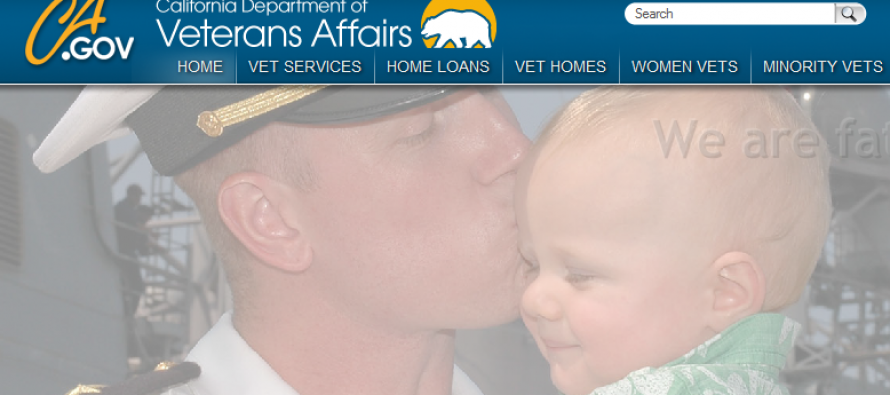Report: CalVet 'must do better' to help veterans

 Many California military veterans are hurting.
Many California military veterans are hurting.
In its recently released report, “An Agenda for Veterans: The State’s Turn to Serve,” the bi-partisan Little Hoover Commission critiques the California Department of Veterans Affairs for its “inconsistent leadership” and inability to fully take advantage of funds set aside for veterans.
The dysfunction becomes more pressing every day. California’s population of veterans — already at 1.8 million, the largest of any state — will see annual growth of about 35,000 in the coming years.
CalVet and its flaws
CalVet’s vision is simple. Its Website promises, “CalVet will be the state’s leading advocate and resource so veterans can achieve the highest quality of life.” The department employs 2,600 workers and has an annual budget of $405 million. The CalVet Veterans Homes Division, which provides long-term care for homeless, disabled and retired veterans, consumes nearly 80 percent of the department’s budget.
The Farm and Home Loan Program consumes $66 million a year. Yet the results are low. According to the report, “The program issued 81 loans totaling $8.8 million in the 2012-13 fiscal year. The program also has collaborated with Habitat for Humanity to build, through a sweat equity program, homes for veterans.”
But a weak Veterans Services Division, charged with outreach and educating veterans about their access to certain federal benefits, is undermining the department’s ambitious goals—and hurting the state in the process.
“The overriding problem for California is that many California veterans are eligible for federal benefits that they need, but they are not enrolled to receive them,” the report says.
The Texas population of veterans, comparable in size to California’s, drew down an average of 30 percent more in veterans' benefits than California’s. Florida’s drew down 16 percent more.
“Texas and Florida each have a very aggressive outreach program. They also have a fairly good veterans service representative core,” J.P. Tremblay, deputy secretary for communications and legislation, said in an interview. (He added that Florida’s large retiree population and Texas’ many military bases are also natural advantages.)
In fact, CalVet has based one of its marquee efforts — the implementation of a 36-person strike team to lessen the backlog of soldiers waiting for benefits — on a Texas program.
According to the report, encouraging veterans to seek benefits may actually be fiscally responsible (bold emphasis added):
“Some who do not draw down their federal veterans benefits instead turn to public aid programs. Veterans experts told the Commission that California leaves between $500 million and $1 billion a year in federal money untapped because California veterans are not signed up for benefits and services to which they are entitled and have earned. Getting more California veterans signed up for their federal Veterans Administration benefits could improve their lives, bring more money into the state economy and reduce demand on state services.”
The chair of the state Senate Veterans Affairs Committee is Sen. Ben Hueso, D-San Diego. He told U-T San Diego that the report contained “important insight on how we can improve our veteran services and invest in ways that will allow us to effectively leverage federal dollars to benefit California veterans.”
The report also notes that CalVet has “suffered through long stretches of turnover at the secretary level, often when strong leadership was needed to implement needed change.”
This has made the department slow to adapt to changes, according to the report, and has prevented CalVet from harnessing “the potential of the state’s many non-profit partners, including the main veterans organizations.”
Said CalVet Secretary Peter J. Gravett in a written statement, “[T]he department now has a new strategic imperative to refocus its efforts on the needs of our state’s veterans and the continuum of services available to them.” Gravett and CalVet did not contest any of the report’s findings.
Practical solutions
The commission also spells out several concrete recommendations for CalVet.
Since the Legislature has already provided $6 million in one-time funds to review and clean up benefits claims, the report says, it “should monitor the department’s results to determine whether additional funding is warranted.”
Also, the report suggests sending operational savings to a litany of services that help veterans file benefit claims and pursue referrals for services. (Currently, savings from operational efficiency are sent to California’s general fund.) The report also suggests several strategies — such as investing more heavily in social media marketing — as a means of engaging the community of veterans.
The commission also suggests that the Legislature and governor “review and update the Military and Veterans Code” of the state, which was described in a Little Hoover Commission press release as “confusing, contradictory and misaligned with current CalVet practices and veterans’ needs.”
Most salient, though, was the commission’s recommendation that California’s state and federal representatives “work with and press federal agencies to obtain up-to-date information from veterans and relay it to appropriate state agencies through electronic means.”
Such a program would enable California to develop a database of veterans and to reach veterans sooner after their departure from the military, helping veterans file faster and more accurately.
Tremblay said that CalVet has already begun to use the Defense Personnel Records Information System. According to its Web site, DPRIS “provides a conduit for the secure electronic retrieval of document images” from military personnel records. (Access to these records is often necessary for veterans applying for benefits.)
But in a frustratingly complex bureaucracy, the state often works against itself while trying to help.
“There’s a paradox here,” Little Hoover Commission Executive Director Stuart Drown said in an interview. “The more people the state gets to file claims, the greater the backlog becomes.”
Federal backlog
The system for claiming benefits is simple, at least in theory.
Local agencies help a veteran prepare his/her claim, then forward it to the state; which reviews and then submits the claim to the federal Department of Veterans Affairs, which approves or denies the benefits.
Naturally, the process is muddled and lengthened at each step by structural inefficiency, understaffing and confusion.
Earlier this year, the Center for Investigative Reporting, in a report about the federal Department of Veterans Affairs, said “the agency’s ability to quickly provide service-related benefits has virtually collapsed under President Barack Obama.”
The Obama administration attempted to improve the backlog by computerizing processing and hiring more staff. But as the CIR showed, those initiatives “have fallen apart in the implementation.”
In fact, the national average wait-time for benefits is 349.6 days. Meaning the average veteran waits nearly a year before receiving benefits that are considered a right. The average wait times in Los Angeles and Oakland are significantly worse than the national average, at 619.4 days and 617.8 days, respectively.
Many of the delays are caused by veterans who simply fail to fill out the forms correctly. To its credit, CalVet is already working to alleviate the problem.
According to Tremblay, the department will send out strike teams by the end of September or the beginning of October to ensure that all forms are “fully developed,” or correctly filled-out.
Tremblay says the temporary strike teams — 36 people set to work for three years — have “more than enough time to take care of it and deal with the backlog.”
After all, the commission argued that, despite the federal government’s failings, California could still greatly improve its wait times.
The report concluded, “California can do better, and to honor those who have sacrificed for the many, it must do better.”
Related Articles
Green flack thinks <2% annual growth in CA 'cleantech' is impressive
The fallout from the news that 16 Assembly Democrats were willing to go on the record with their concerns that
Cal State University system hikes fees to offset tuition freeze
What a difference five years makes. In 2010, the California State University system issued $352 million in revenue bonds. Earlier this month,
Parent Trigger is welcome school reform
July 27, 2012 By Joseph Perkins California public schools received their annual report cards last month. On the state’s 10-point




